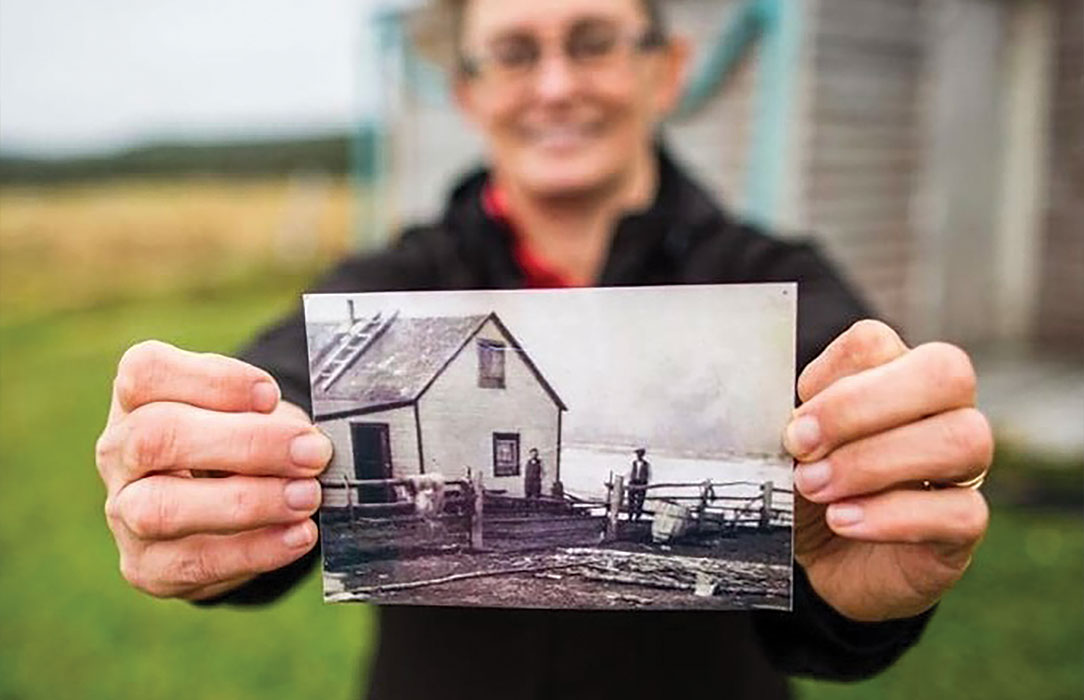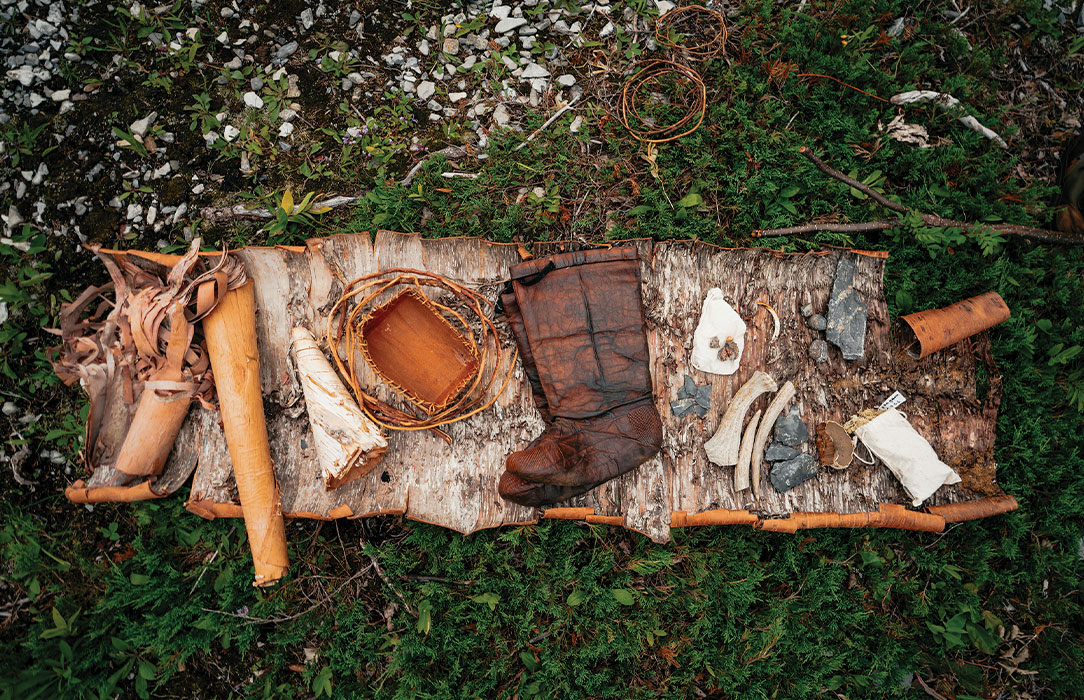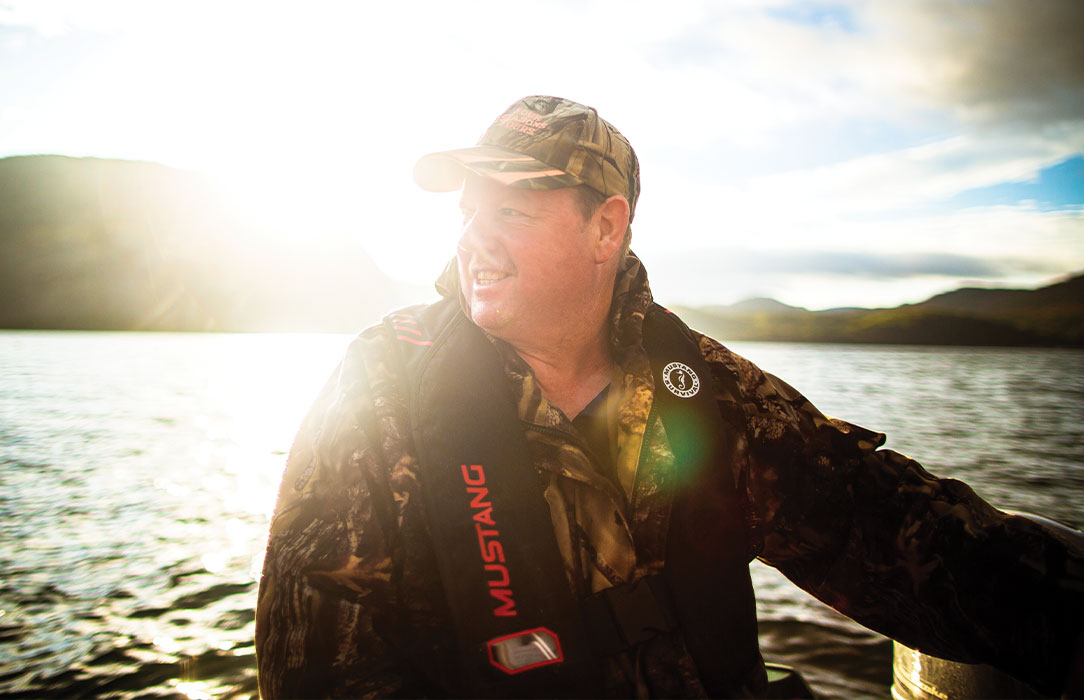Newfoundland and Labrador is home to three Indigenous groups: the Inuit, Innu and the Mi’kmaq. Whether you want to paddle a big canoe or end the day with a campfire and bannock on the beach, a trip east will allow you to dive into the unique culture
Spectacular Views, ATV Adventures
Suited up in rain gear in Western Newfoundland’s Three Rivers region, our group hoped the skies would clear up, but instead, they opened up. Still, led by our hilarious hosts Pirate Paul and Ruth Gale, our merry band of riders travel in a rugged convoy of ATVs through treed trails, rocky beaches and breezy bluffs. The plan is to reach a mountaintop and stop for a trailside mug-up in the woods while Paul regales us with local lore. Instead, we get drenched, so we finish our outing back at the lodge, where we dry off by the fire before feasting on homemade moose burgers and sausages (the moose hunted and shared with the Qalipu First Nations family). We may have missed out on some spectacular views, but Paul still entertained us with stories of hidden treasure, and the extra wild and woolly weather somehow made our adventure extra fun. pirateshavenadventures.com

Mi’kmaq guide Trina Reid, from Gros Morne Adventures, with a photo of her relatives in Bakers Brook, now a ghost town. Photo: The Newfoundland and Labrador Indigenous Tourism Association
Easy Hikes, Gorgeous Murals
A visit to Bottle Cove, an easy two-kilometre trail that leads to Miranda (Island) Cove, Sunset Rock and Bottle Cove Beach, offers awe-inspiring views of the ocean from above, including being greeted by whales down below. That’s right, whale-watching from a footpath! As we tour around the island, we spot a series of stunning Indigenous public artworks, including a mural by Mi’kmaq artists Jordan Bennett and Marcus Gosse in Corner Brook that honours the Crow Gulch community, forced out of their homes when the land was bulldozed in the 1960s.
Indigenous people have lived here for thousands of years as the land’s original inhabitants, which archaeologists call the Maritime Archaic and Palaeo-Eskimo peoples. Oral traditions suppose that the Mi’kmaq were in Newfoundland (Ktaqmkuk) prior to European contact and lived many centuries as traditional hunters and trappers before a series of expulsions and government relocation programs.

An assortment of Mi’kmaq items including a birchbark cone for moose calling; a birchbark and spruce root basket; coil of alder root for lashing; sealskin boots; rocks for striking fire and sharp tool rocks; moose antlers for carving or using for grinding (like a mortar and pestle). Photo: Gros Morne Adventures
Dory Trips & Lobster Boils
This classic Newfoundland experience can be had with the Indigenous-owned Four Seasons Tours, but more specifically, with Darren Park, the only guide in Newfoundland licensed to take private guests out on a traditional wooden dory for sightseeing, photography tours and fishing. He’s also the only guide I’ve ever met who boldly promises you won’t return from a trip empty-hooked. (His story checks out.) Even more exciting than pulling a brilliant redfish from the water? Taking in the double-arm fjord in the Bay of Islands and seeing bald eagles soar overhead. But the best part of all is returning to Park’s cabin and feasting on plump mussels and lobster, freshly boiled in saltwater, sweet and briny, spread out on a shoreline table for picnic lunch perfection. fourseasonstours.ca

Darren Park, the Mi’kmaq owner of Four Seasons Tours, takes travellers out on the Bay of Islands to spot whales, dolphins, seals, otters and bald eagles (below), followed by a shoreline picnic. Photo: Courtesy Newfoundland and Labrador Indigenous Tourism Association and Dru Kennedy Photography
Calm Waters, Local Lore
A breezy two-hour tour on a comfy zodiac on the Humber River leads us through the inner Bay of Islands, past the historic yet still fully operational paper mill in Corner Book. We let the sun kiss our faces as we try to decipher the rock face of “The Old Man in The Mountain,” said to be a marker for buried Spanish treasure on Shellbird Island. (So much supposed treasure around these parts!) It’s a calm and stunning ride with mirror-like forest reflections, seabird spotting and loads of history. When in Western Newfoundland, the idea is to get outside and stay outside. Easy enough with the Indigenous-owned Everoutdoor Adventures, which also offers hiking and kayaking, as well as the Saltbox Restaurant in Elmastukwek First Nation, where the specialties include patio views over the Bay of Islands and hearty seafood chowder. everoutdoor.ca

Photo: Courtesy Newfoundland and Labrador Indigenous Tourism Association and Dru Kennedy Photography
Historic Sites, Indigenous knowledge
This is one I plan to hit next time I visit – a multi-day hiking trip led by Mi’kmaq guides in the heart of Gros Morne National Park that’s all about experiencing Indigenous activities and traditions. (The six-night hiking itinerary happens just four times a year, during June, August and September.) There’s a Mi’kmaq Medicine and Fire Circle followed by a forage-and-farm dinner, a hike along the Tablelands (Gros Morne’s unique red rocks, once part of the Earth’s mantle), paddling in an authentic 10-person big canoe, enjoying a campfire and bannock on the beach, a visit to Point Riche Lighthouse, a walk to an archeological site of the Palaeo-Eskimo peoples, sea kayaking in Bonne Bay, and more.
Indigenous tourism is just getting started in Newfoundland and Labrador. It’s important to be led and taught by the original inhabitants of this beautiful province, to hear their stories and meditate on the past and future. I can’t wait to return and experience even more. grosmorneadventures.com


